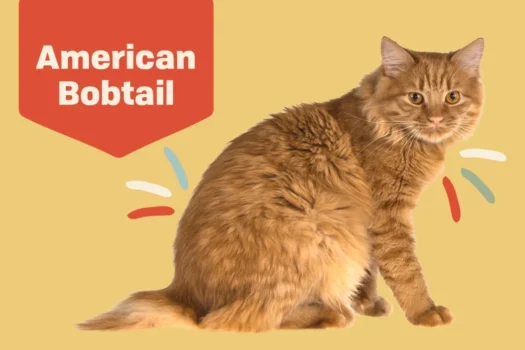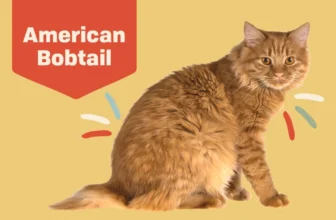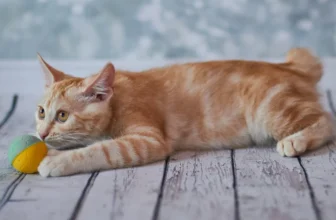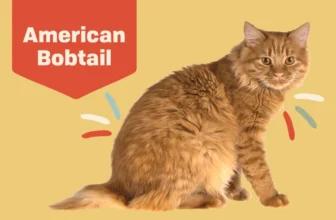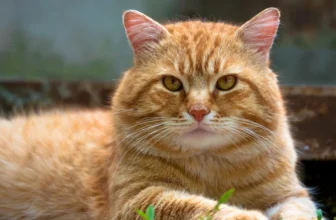Have you ever seen a cat with a short and stumpy tail? That cat might have inherited the Bobtail gene. It’s a curious genetic quirk that has fascinated researchers and cat lovers for years. The Bobtail gene is particularly prevalent in the American Bobtail, a breed of cat known for its distinctive appearance and endearing personality. In this article, we’ll explore the Bobtail gene and its influence on American Bobtail tails, personalities, and health concerns. Join us on this journey of discovery and learn everything you need to know about the fascinating Bobtail gene.
The Bobtail Gene: What is it?
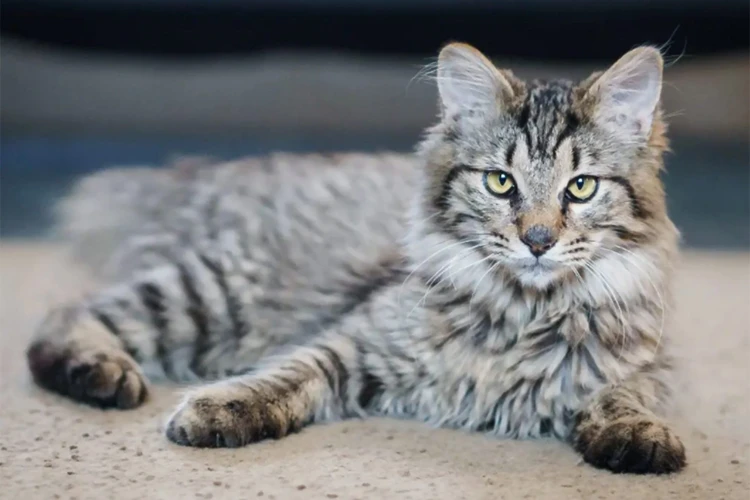
The bobtail gene is a fascinating genetic trait that has been attracting attention for many years. Whether you are an animal lover or a cat enthusiast, learning more about this gene and its possible impact on cats’ tails can be quite intriguing. So, what exactly is the bobtail gene and how does it affect cats? Let’s dive into the details and find out more. But before we do, did you know that the length and the shape of the tail can be important indicators of a cat’s health? Find out more about this in tail length of American Bobtails article.
What Causes the Bobtail Trait?
The bobtail gene is a naturally occurring genetic mutation that has existed in cats for centuries. This mutation causes a shortened tail or no tail at all, and is found in various cat breeds including the American Bobtail. The bobtail gene is caused by a dominant gene that only requires one copy to be present for a cat to inherit the bobtail trait.
So, what causes this dominant gene to occur? The exact cause of the bobtail gene mutation is unknown, but it is believed to be a natural genetic mutation that occurred spontaneously in cats. As with all dominant genes, if one parent has the bobtail gene, there is a 50% chance that their offspring will inherit it as well. It is also possible for two cats without bobtail genes to produce offspring with the bobtail trait if they carry recessive bobtail genes.
The bobtail gene not only affects the tail length, but also its structure and flexibility. The vertebrae in a bobtailed cat’s tail are contorted and shaped differently than in cats with normal tails, and the muscles and bones in the tail are also affected. This unique tail structure gives bobtailed cats a distinctive look that sets them apart from other cats.
If you want to learn more about different tail shapes in bobtails, check out this useful article that explains the meanings behind the various tail shapes. Additionally, the special tail muscles that contribute to bobtail agility are covered in detail in this article about Bobtail agility and anatomy. Also, you may want to read about the evolution of the American Bobtail tail, tail size and balance in American Bobtails, and tail care tips for American Bobtails.
American Bobtail Tails: How are They Different?
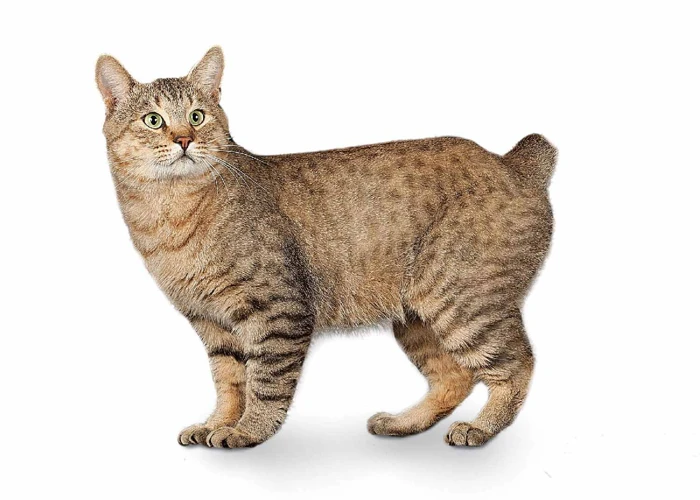
As we delve deeper into bobtail genetics, it’s important to understand the unique characteristics that set the American Bobtail apart from other cat breeds. The American Bobtail is an exceptional feline because of its short, stumpy tail that stands out from a mile away. In this section, we’ll explore the various tail types in American Bobtails and how the bobtail gene influences the development of their tails.
Tail Types
When it comes to American Bobtail tails, there are three distinct tail types that have been recognized. These include straight, slightly curved, and kinked tails. Each of these tail types has its own unique characteristics:
| Tail Type | Characteristics |
|---|---|
| Straight | As the name suggests, this tail type is straight and does not have any curves or kinks. It is the rarest of the three tail types and is often associated with the Manx breed. |
| Slightly Curved | This tail type is the most common among American Bobtails. The tail is usually shorter than the average cat’s tail, measuring between 2 and 4 inches in length. It has a slight curve, giving it a graceful appearance. |
| Kinked | The kinked tail type is characterized by a tail that is bent or kinked in some way. This tail type is the rarest of the three and is often associated with cats that have been bred from the Manx or Japanese Bobtail breeds. |
It is important to note that while the kinked tail type may seem intriguing or unique, it is also associated with health concerns such as spinal problems. Breeders need to be careful when selectively breeding for this trait and should prioritize the health and well-being of their cats over aesthetic traits.
How the Bobtail Gene Shapes Tails
The bobtail gene is responsible for shaping the unique tails of American Bobtail cats. This gene creates a shortened tail that ranges anywhere from one-third to one-half the length of a full tail.
There are several ways in which the bobtail gene shapes tails:
- Length: As previously mentioned, the bobtail gene creates a shortened tail that is notably different from other cat breeds. This can vary in length and shape from cat to cat.
- Bone Structure: The shortened tail is due to a spinal defect in the vertebrae, which can also result in curvature or kinks in the bobtail. Despite the deformity, bobtails can still lead healthy and active lives.
- Appearance: The bobtail gene can also impact the appearance of the tail. Some bobtails have a more noticeable bob, while others appear to have a stubbed tail. Regardless of the shape, the unique tail of the American Bobtail is one of its most defining features.
Interestingly, not all American Bobtail cats possess the bobtail gene. While it is a defining trait of the breed, some cats may be born with a full-length tail due to chance occurrence of genetics.
The bobtail gene shapes the tails of American Bobtail cats, giving them a distinct look and appearance.
Personality: How Bobtails Behave
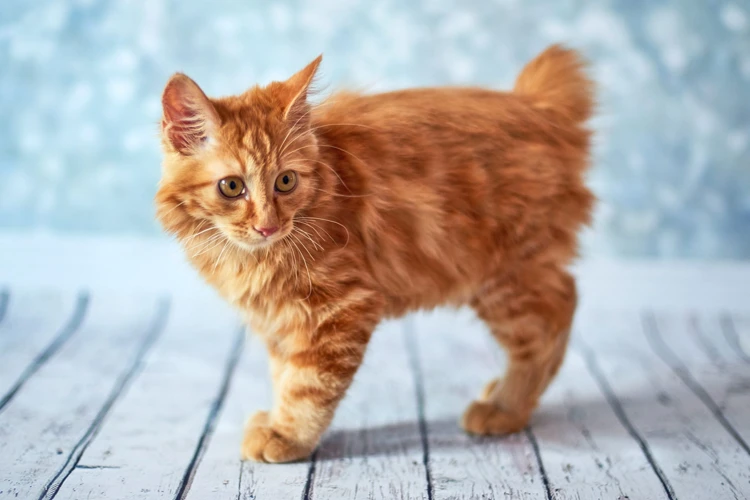
As any cat owner knows, feline personalities can vary widely. When it comes to American Bobtails, their unique physical traits are matched by their equally distinct personalities. So what can we expect from these fascinating felines? Let’s dive into their behavior and see what makes them stand out among their peers. From loyalty to playfulness, American Bobtails are full of surprises, so prepare to have your expectations challenged.
What Affects American Bobtail Personality?
The personality of an American Bobtail is largely influenced by various factors. These include genetics, breeding practices, socialization, and environment. Here’s a breakdown of each of these factors:
| Factor | Influence on Personality |
|---|---|
| Genetics | The Bobtail gene, along with other genetic factors, can influence the cat’s temperament. For example, cats with the gene for short tails tend to be more laid-back and relaxed. |
| Breeding practices | Breeding for specific traits can also impact the personality of American Bobtails. For instance, cats bred for their hunting abilities might have a more curious and active personality. |
| Socialization | How much a cat interacts with humans and other animals during their formative weeks and months can influence their personality. Kittens who are handled and played with frequently are more likely to be social, friendly and outgoing. |
| Environment | The surroundings and experiences of an American Bobtail can also shape their behaviour. A cat exposed to a lot of commotion, loud noises or chaos may develop anxiety or aggression, while a calm and peaceful environment will likely create a more relaxed and easygoing pet. |
It’s worth noting that while genetics play a role in a cat’s personality, every American Bobtail is unique. Even cats with identical genetics and backgrounds can have vastly different personalities due to factors such as individual temperament and life experiences. It’s essential to approach each cat as an individual and cater to their needs accordingly.
Bobtail Intelligence
Bobtail cats are certainly known for their unique tails, but their intelligence is also something to be admired. In fact, American Bobtails are considered to be an exceptionally intelligent breed, which is perhaps unsurprising considering their reputation for being problem solvers.
One of the ways in which Bobtail intelligence manifests is in their ability to learn tricks quickly. They are highly trainable and respond well to positive reinforcement techniques. This makes them great candidates for agility training, which requires not only physical ability but also cognitive skills.
Another sign of Bobtail intelligence is their curiosity and love of exploration. They tend to be very inquisitive cats, always seeking out new experiences and environments. This is not only a sign of their cleverness, but also of their adaptability, which is an important trait in any animal.
Bobtail cats have a remarkable ability to understand human emotions and communicate with their owners. They are known to be attentive and responsive to their owners’ needs, which is why many people consider them to be great companions. This is especially true for those who suffer from anxiety or depression, as Bobtail cats are often able to provide comfort and support.
To give you an idea of just how intelligent these cats are, take a look at this table:
| Breed | Intelligence Level |
|---|---|
| American Bobtail | High |
| Persian | Low |
| Siamese | High |
| Maine Coon | High |
As you can see, the American Bobtail is considered to be highly intelligent, which is why they make such great pets. With their problem-solving skills, curiosity, and emotional awareness, these cats are not only fascinating but also highly adaptable to different living situations.
Health Concerns Related to Bobtail Gene
When it comes to any animal, their health should always be a top priority. Though they may be adorable and fun pets to have, it’s important to understand the potential health concerns that may arise. In the case of the bobtail gene, there are certain health risks to be aware of. In this section, we will delve into the specific medical issues that can affect cats with this unique gene, as well as the risks associated with inbreeding. So, let’s continue our journey of understanding the bobtail gene and its impact on American bobtail tails by exploring the health concerns that come with it.
The Risks of Inbreeding
Inbreeding is a common practice among breeders, but it is not without its risks. The more closely related the parents are, the more likely it is that the offspring will develop genetic abnormalities. The risks of inbreeding are particularly high in breeds that have a limited gene pool, such as the American Bobtail. Some of the risks associated with inbreeding include:
- Increased Prevalence of Genetic Disorders: Inbreeding can lead to a higher prevalence of recessive genetic disorders in the offspring. This is because recessive genes are more likely to be expressed when both parents carry the gene. Examples of genetic disorders that can be more prevalent in inbred populations include hip dysplasia and spinal cord disorders.
- Reduced Genetic Diversity: Inbreeding reduces the genetic diversity of a population, which can make it more vulnerable to environmental changes and diseases. Reduced genetic diversity makes it harder for a population to adapt to changes in the environment, such as climate change or exposure to new pathogens.
- Lowered Immune Response: Inbred individuals may have a weaker immune response than non-inbred individuals. This can make them more vulnerable to diseases and infections.
- Increased Risk of Inherited Deformities: Inbreeding can increase the likelihood of inherited deformities, such as malformed limbs or cleft palates. These deformities can cause pain, discomfort and make it difficult for the animal to survive in its environment.
- Shorter Lifespan: Inbred animals may have a shorter lifespan than non-inbred animals due to the increased susceptibility to genetic disorders.
It is important for breeders to carefully manage their breeding programs to avoid inbreeding, as it can have serious consequences for the health and well-being of the American Bobtail population. One way to do this is to carefully select breeding pairs that are not closely related to one another, thus reducing the risk of genetic abnormalities. Breeders should also regularly monitor their cats for signs of genetic disorders and seek veterinary care immediately if any issues arise.
Specific Medical Issues to Monitor
While American Bobtails are generally healthy cats, there are a few medical issues that are specific to this breed that breeders and owners should be aware of. Here are some of the medical issues that Bobtail cats may be prone to:
- Spina Bifida: This is a congenital condition that affects the spinal cord. In some cases, the spinal cord will protrude through the spinal column, which can cause problems with mobility and control of the bladder and bowels. If left untreated, this condition can lead to infection and other serious health problems.
- Urinary Tract Issues: Male Bobtails can be prone to blockages in the urinary tract. This can cause a buildup of urine in the bladder, which can lead to a number of serious health problems if not treated promptly. Female Bobtails can also be prone to urinary tract infections.
- Hip Dysplasia: This is another congenital condition that affects the hips. In cats with hip dysplasia, the hip joint may not develop properly, which can lead to pain and mobility problems. This condition can be managed with pain medication and physical therapy.
- Heart Problems: Bobtail cats may be prone to hypertrophic cardiomyopathy, which is a condition that causes the walls of the heart to thicken. Over time, this can lead to heart failure. Regular checkups with a veterinarian can help catch this condition early.
- Tail Injuries: While Bobtails are known for their strong tails, they can still be prone to injury. When a cat’s tail is injured, it can cause pain and discomfort, and may require a visit to the veterinarian.
It’s important to note that not all Bobtails will experience these health issues, and they should not deter you from adopting one of these unique and charming cats. However, it is important for breeders and owners to be aware of these conditions so that they can take steps to prevent and manage them. Regular visits to the vet and a good diet and exercise plan can help keep Bobtails healthy and happy for many years to come.
Conclusion
As we conclude, it’s clear that the bobtail gene has a significant impact on the tails of American Bobtail cats. Understanding the traits and characteristics of this breed is essential for prospective owners to ensure that they can provide the necessary care and attention for their pets.
The bobtail gene, as we’ve seen, is responsible for the unique, shortened tail of these cats. This gene has also been shown to affect other aspects of the cat’s physiology and behavior. American Bobtails are often friendly and affectionate, making them an ideal choice for families and individuals who want a loving and loyal companion.
However, there are specific health risks associated with the bobtail gene, particularly when it comes to inbreeding. Prospective owners must be aware of these risks and take steps to minimize them by selecting a reputable breeder and ensuring that the cat receives adequate medical care.
Overall, the bobtail gene has a significant impact on the appearance, personality, and overall health of American Bobtail cats. By understanding the implications of this gene, we can ensure that we provide the best possible care for these unique and fascinating felines. So, if you’re considering adopting an American Bobtail, be prepared to invest plenty of love and attention, and you’ll be rewarded with a loving and affectionate companion that will capture your heart for years to come.
Frequently Asked Questions
What breeds commonly have the bobtail trait?
The American Bobtail breed is the most well-known breed to have the bobtail trait, but it can also be found in other breeds like the Japanese Bobtail and the Manx.
Is the bobtail gene harmful to cats?
No, the bobtail gene is not harmful to cats. In fact, it is a naturally occurring genetic mutation that has been passed down through generations.
What causes the bobtail gene mutation?
The bobtail gene mutation is caused by a spontaneous genetic mutation that affects the development of the tail.
Do bobtails have any special tail care needs?
No, bobtails do not have any special tail care needs. Their tails are naturally shorter and do not require any additional grooming or care.
How can you tell if a cat carries the bobtail gene?
One way to tell if a cat carries the bobtail gene is to look at the length of their tail. If a cat has a shorter tail than normal, they may carry the bobtail gene.
Can bobtails still climb and jump like cats with regular tails?
Yes, bobtails can still climb and jump like cats with regular tails. Their unique tail does not hinder their ability to move around and play.
Do bobtails have any unique personality traits?
Bobtails are known for being friendly and social. They are also quite intelligent and often display dog-like behaviors, such as playing fetch.
Are kittens born with the bobtail trait or does it develop over time?
Kittens are born with the bobtail trait. The mutation affects the development of the tail in the womb.
Can the bobtail gene be bred out of a breed?
Yes, the bobtail gene can be selectively bred out of a breed. However, it is important to note that it is a natural genetic mutation that should not be eliminated entirely.
Are bobtails more prone to spinal issues due to their tails?
While bobtails are not more prone to spinal issues than other cats, some bobtails may develop issues related to their shorter tail. It is important to monitor their health and seek veterinary care if any issues arise.

